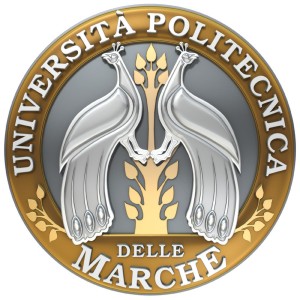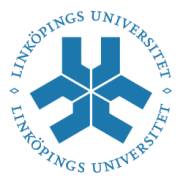Università Politecnica delle Marche (UNIVPM), Italy
The research activity of the “electromagnetics (microwave/RF/photonics) group” at the “Dipartimento di Ingegneria dell’Informazione” of the “Università Politecnica delle Marche”, Ancona, Italy, brings unique experience in the frequency (energy)/time-domain full-wave multiphysics modeling of the combined electromagnetic-coherent transport problem in carbon-based (graphene, CNT) nano-structured materials and devices. It has been the first “em group”, in Italy, in dealing with carbon nano-structures. The core concept is that while the advancement of research in this area heavily depends on the progress of manufacturing technology, still, the global modeling of multi-physics phenomena at the nanoscale is crucial to its development. Modeling, in turn, provides the appropriate basis for design. The bridge between nanosciences and the realized circuits can be achieved by using the panoply of microwave/RF engineering at our disposal. From the theoretical models and techniques, we produced effecient software for the anlysis and design. Very many contributions have been published in high impacting journals (IEEE Transactions, Physical Review, etc.)
In our models, the quantum transport is described by the Schrödinger equation or its Dirac-like counterpart, for small energies. The electromagnetic field provides sources terms for the quantum transport equations, that, in turn, provide charges and currents for the electromagnetic field. In the frequency-domain, a rigorous Poissoncoherent transport equation system is provided, including electrostatic sources (bias potentials). Interesting results involve new concept-devices, such as GNR nano-transistors and multipath/multilayer GNR circuits, where charges are ballistically scattered among different ports under external electrostatic control. Further examples are given by the simulation of cold-cathodes for field emission based on graphene and by the analysis of optical emission/absorption by single or few layer GNR.
Recently, we began to work on i) the model of the graphene/CNT-metal transition and related equivalent circuits models, ii) the inclusion of thermal effects in graphene/CNT, e.g. as deriving from ballistic path reduction due to phonon scattering and as arising at the contact between graphene and silicon dioxide.
In the time-domain, we now avail a novel Schrödinger/Dirac-based transmission line matrix (TLM) solver for the self-consistent analysis of the electromagnetic-coherent transport dynamics in realistic environments. It is highlighted that the self-generated electromagnetic field may affect the dynamics (group velocity, kinetic energy etc.) of the quantum transport. This is particularly important in the analysis of time transients and in the describing the behavior of high energy carrier bands, as well as the onset of non-linear phenomena due to impinging external electromagnetic fields. We are now capable of modelling THz carbon-based emitters/detectors, CNT-enabled traveling wave (TW-CNT) devices, and the carbon-metal transition; we are exploiting novel properties and devices based on frequency multiplication, graphene gyrotropic effects, photoconductive effects.
Regarding the laboratory activity, we recently introduced a broadband Scanning Microwave Microscopy (SMM).
The SMM performs local quantitative measurements of electromagnetic properties such as dielectric constant, conductivity and surface impedance. In addition, the broadband measurements of these parameters open the possibility to perform local microwave spectroscopy and a time-domain analysis of microwave images.
The SMM system includes a commercial scanning tunneling microscope (STM), whose conducting tip is also used as a microwave probe, connected to a VNA, featuring 70-GHz bandwidth. The STM probe is a platinumiridium sharp tip; the STM tip works as the microwave probe. The VNA and STM devices are controlled and synchronized by means of a software produced by us that allows at the same time the processing of the obtained measurements. The spectrum acquired can be analyzed in the frequency (by means of the correlation of images recorded at different frequencies) and time domain (Time-Domain Reflectometry). The system was applied in the study of carbon multiwalled nanotubes, biological samples and multi-layers graphene structures.
Role in NANO-RF:
UNIVPM will focus on:
- Multiphysiscs Schrödinger/Dirac-based modeling of the electromagnetic-coherent transport phenomena of the graphene/CNT devices. Microwave and Terahertz circuit characterization stemming from the above analysis in a form suitable for design.
- Models of the graphene/CNT-metal transition. Their equivalent circuits models.
- Inclusion of thermal effects in graphene/CNT (e.g. the contact between graphene and silicon dioxide).
- Their circuit models in system characterization.
- Experimental AFM/STM/SMM characterization and validation of electromagnetic/quantum-mechanics properties of carbon nanostructures.
Laboratory Resources:
Microwave Laboratory: two vector network analyzers (VNA) Agilent, model E5071C, featuring 8.5 GHz bandwidth, model E8361A, 70 GHz maximum bandwidth.
Photonics Laboratory: active anti-vibration tables, laser sources, detectors, fiber optic somponents, optical spectrum analyser working in the Thz range, fiber-optic Fabry-Perot microscopy system for near/far field measurements of infrared reflectivity and absorption on micrometer scales.
Microscopy Laboratory : AFM Microscope, able to provide Electric Force Microscopy, Scanning Capacitance Microscopy and Kelvin Probe Microscopy, STM and broadband Scanning Microwave Microscope (SMM) for the characterization of electromagnetic and quantum-mechanical properties of materials.
Key personnel:
Luca Pierantoni received the ‘Laurea’ degree (summa cum laude) in Electronics Engineering in 1988 and the Ph.D. degree in 1993 in Electromagnetics from the Department of Electronics and Automatics at the University of Ancona, Italy. From 1989 to 1995, he was with the same department, as a Research Fellow. From 1996 to 1999 he worked at the Technical University of Munich, Germany, in the Institute of High-Frequency Engineering as Senior Research Scientist. In 1999 he joined the Department of Electromagnetics at the Polytechnic University of Marche, Ancona, Italy as Assistant Professor. In 2002, he has been guest scientist at the Technical University of Munich. Presently, he is with the Department of Information Technology at the Polytechnic University of Marche. His current research interests are in the investigation of the combined Maxwell-quantum transport problem in nanomaterials, the analysis of electrodynamics in nanostructures and in the development of computational techniques for the multi-physical modeling of micro- and nano-devices. He is a member of the Italian University Network for the Physics of Matter (CNISM) and of the Italian Institute of Nuclear Physics (INFN). He is the Chair of the IEEE Microwave Thoery an Technique Society (MTT-S) “RF Nanotechnology” technical committee. He has been recently nominated IEEE MTT-S Distinguished Microwave Lecturer (DML) and IEEE EuMA/MTT-S European Microwave Lecturer (EML). He is Associate Editor of the IEEE Microwave and Wireless Component Letters (MWCL).
Davide Mencarelli: received the ‘Laurea’ Degree (summa cum laude) in Electronics Engineering in 2002, and was awarded the PhD degree in 2005 from the Università Politecnica delle Marche, Italy. Currently, he is with the Department of Biomedical Electronic and Telecommunication Engineering of the same University. His previous research interests were in analysis and modelling of integrated non-linear electro-optic devices, periodic photonic arrays, and nanoscale devices and carbon nanostructures. Currently, he is working on the analysis of the electromagnetic properties of graphene, graphene nano-ribbons, including the modelling of practical devices such as nano-FETs (field effect transistors), optical nano-sources, and microwave probes for near-field microscopy. He is a member of the Italian University Network for the Physics of Matter (CNISM)
Andrea Di Donato: received the Laurea degree (summa cum laude) in electronics engineering and the Ph.D. degree from the University of Ancona, Ancona, Italy, in 2000 and 2003, respectively. He is currently with the Department of Electromagnetism, University of Ancona (presently Polytechnic University of Marche). His research interests include the development of analytical/numerical methods for the analysis and modeling of integrated optical devices and RF nanoelectronics devices. In particualar, he is working on the analysis of the graphene/CNT-metal transition as well as of the thermal effects in graphene/CNT devices. He is a member of the Italian University Network for the Physics of Matter (CNISM), Optical Society of America (OSA) and IEEE.
Marco Farina: completed the “Laurea” in electronics at the University of Ancona and was awarded the summa cum laude degree in 1990. In 1995 he received the Ph.D. degree from the same university. From 1991 to 1992 he was Technical Officer in the Italian Army. Since 1992 he has been with the Department of Electronics and Automatics at the University of Ancona (currently Dipartimento di Ingegneria dell'Informazione at Università Politecnica delle Marche) as research fellow. Presently he is Associate Professor in the same Department. In summer 2010 he qualified for the Full Professor ("idoneità"). He is author, with Prof. T. Rozzi, of the book "Advanced electromagnetic analysis of passive and active planar structures". His software for modeling of Microwave devices is currently used by a number of institutions and companies, among the others NASA, Coventor, Intel, RF Microdevices, Toshiba etc. In 2008 Dr. Farina was elected to the grade of Senior Member of IEEE in recognition of professional standing. In 2009, together with Prof. Antonio Morini, he was recipient of the contract N° 22964/09/NL/CB of the European Space Agency, in the framework of the Innovative Triangle Initiative, entitled 'Generalized Thru-Reflect-Line (GTRL) Calibration Techniques for Measurement of Waveguide Components beyond the Monomodal Band'. In 2011 he was recipient of an additional contract (ITIB) ESTEC No. 4000103082/11/NL/CB.
Tullio Rozzi received the Dottore degree in physics from the University of Pisa, Pisa, Italy, in 1965, the Ph.D. degree in electronic engineering from The University of Leeds, Leeds, U.K., in 1968, and the D.Sc. degree from the University of Bath, Bath, U.K., in 1987. From 1968 to 1978, he was a Research Scientist with the Philips Research Laboratories, Eindhoven, The Netherlands. In 1975, he spent one year with the Antenna Laboratory, University of Illinois at Urbana-Champaign. In 1978, he became the Chair of Electrical Engineering with the University of Liverpool. In 1981, he became the Chair of Electronics and Head of the Electronics Group, University of Bath, where he was also Head of the School of Electrical Engineering on an alternate three-year basis. Since 1988, he has been Full Professor with the Dipartimento di Elettromagnetismo e Bioingegneria (currently DII), Università Politecnica delle Marche, Ancona, Italy, where he was also Head of the department. Dr. Rozzi was the recipient of the 1975 Microwave Prize presented by the IEEE Microwave Theory and Technique Society (IEEE MTT-S), and of the Senior Membership IEEE in 1974, of the Fellowship in 1990 and Life Fellow in 2007 for "for contributions to the theory and modeling of propagation in waveguides with discontinuities". He is a member of the Italian University Network for the Physics of Matter (CNISM).





